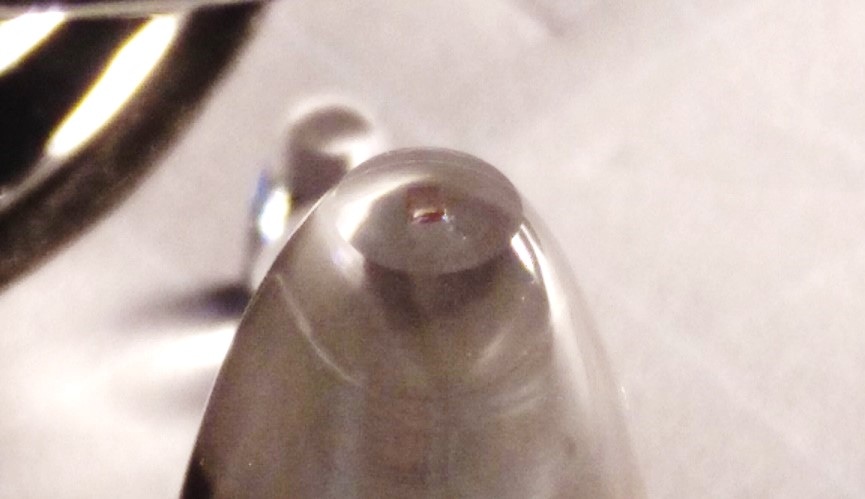Jul 2 2019
Quantum technology is close to making the leap from scientific research to real-world applications. Facilitating this is the new MiLiQuant research project wherein universities and businesses are collaborating to create new applications for quantum technology.
 A diamond on a parabolic light collecting lens is the main component of the new angular rate sensor. (© Arne Wickenbrock)
A diamond on a parabolic light collecting lens is the main component of the new angular rate sensor. (© Arne Wickenbrock)
The German Federal Ministry of Education and Research (BMBF) will be aiding the project with approximately EUR 9.4 million that will be spread through the next three years up to early 2022. Johannes Gutenberg University Mainz (JGU) and Robert Bosch GmbH in Gerlingen are partners in the MiLiQuant project. Further partners are Q.ant GmbH in Stuttgart, Carl Zeiss AG in Jena, Nanoscribe GmbH in Eggenstein-Leopoldshafen, and Paderborn University.
In the collective project MiLiQuant, short for "Miniaturized light sources for use in industrial quantum sensors and quantum imaging devices", the scientists improve diode laser beam sources so that they can be used in industrial quantum technology applications. The aim is to create miniaturized, frequency- and power-stable beam sources that can also be used beyond the laboratories. These fundamental technologies are being tailored to match the requirements of particular applications in quantum imaging and quantum sensor technology.
Mainz University and Robert Bosch GmbH are collaborating in the production of gyroscopes
Miniaturized light sources are essential in imaging systems and industrial sensors. The participants in the joint project are concentrating on the research and development of compact industrial light sources with output powers of up to 1 Watt. These kinds of light sources either directly employ quantum mechanical occurrences themselves or facilitate quantum mechanical effects to be obtained.
To show the viability of quantum sensors, researchers of the Quantum, Atomic, and Neutron Physics (Quantum) group at the Institute of Physics at JGU and Robert Bosch GmbH are creating two gyroscopes or angular rate sensors, one use of which would perhaps be to ensure driverless vehicles stay in the same lane.
We are developing one sensor based on nuclear spin comagnetometry with alkali gas cells, while another is based on color centers in diamonds. The latter, in particular, offers great potential for miniaturization.
Dr. Arne Wickenbrock, Quantum Scientist, Helmholtz Institute Mainz
Other likely applications to be created via the collective project include the usage of diamond-based sensors in medical diagnostics to detect, for example, nerve and brain activity during surgery, reduced-radiation microscopy in the mid-infrared range, and quantum sensors for non-invasive monitoring of heart rate and neural activity in unborn babies.